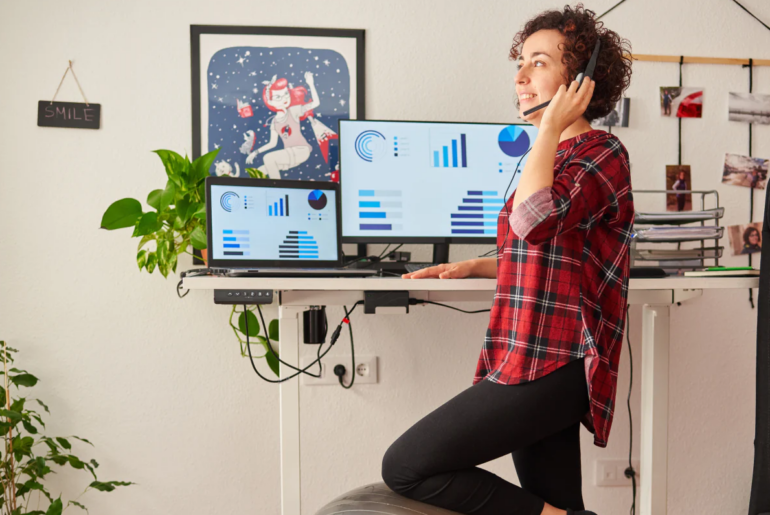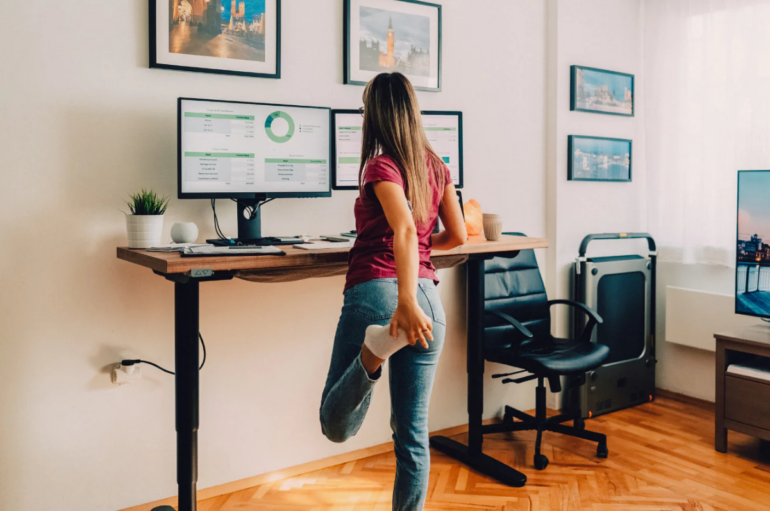In today’s sedentary-centric world, where many individuals spend the majority of their day seated at desks or lounging on couches, the importance of tracking standing time cannot be overstated.
With the rise of tracking devices and apps, individuals now have the tools to monitor their movement and activity levels throughout the day, including the time spent standing.
By incorporating standing time tracking into their daily routine, individuals can optimize their health and productivity while reducing the negative effects of prolonged sitting. Let’s explore how tracking standing time can lead to better health and productivity outcomes.
Increasing Awareness of Sedentary Behavior

One of the primary benefits of tracking standing time is that it increases awareness of sedentary behavior and encourages individuals to make healthier choices. Many people underestimate the amount of time they spend sitting each day, which can have detrimental effects on their health and wellbeing.
By using tracking devices or apps to monitor standing time, individuals gain insight into their activity patterns and can identify opportunities to incorporate more movement and standing into their daily routine.
Promoting Better Posture and Spinal Health
Tracking standing time can also promote better posture and spinal health by encouraging individuals to spend more time standing and less time sitting. Prolonged sitting can lead to poor posture, muscle imbalances, and spinal misalignment, which can contribute to back pain and discomfort.
By standing up regularly throughout the day, individuals engage their core muscles, improve spinal alignment, and reduce the risk of musculoskeletal issues associated with prolonged sitting.
Boosting Energy Levels and Productivity
Standing up and moving around periodically throughout the day can help boost energy levels and productivity by increasing blood flow and oxygen delivery to the brain. Studies have shown that standing desks and regular movement breaks can improve focus, concentration, and mental clarity, leading to better performance and efficiency in tasks.
By tracking standing time and setting reminders to stand up and move around, individuals can maintain higher energy levels and stay more alert and engaged throughout the workday.
Reducing the Risk of Chronic Disease

Prolonged sitting has been linked to an increased risk of chronic diseases such as obesity, type 2 diabetes, cardiovascular disease, and certain types of cancer.
By tracking standing time and aiming to reduce sedentary behavior, individuals can lower their risk of developing these chronic conditions and improve their overall health and longevity.
Incorporating more standing and movement into the daily routine promotes better circulation, metabolic function, and cardiovascular health, leading to better long-term health outcomes.
Setting Goals and Monitoring Progress
Activity tracking allows individuals to set goals for standing time and monitor their progress over time. By setting achievable goals and tracking standing time on a daily or weekly basis, individuals can gradually increase their standing time and build healthier habits.
Many tracking devices and apps offer features such as goal setting, progress tracking, and motivational reminders to help individuals stay on track and reach their health and fitness goals.
Conclusion

Tracking standing time is a valuable tool for optimizing health and productivity in today’s sedentary world.
By increasing awareness of sedentary behavior, promoting better posture and spinal health, boosting energy levels and productivity, reducing the risk of chronic disease, and setting goals for standing time, individuals can improve their overall wellbeing and quality of life.
Whether using tracking devices or simple strategies such as setting reminders to stand up and move around, standing up and being counted can lead to better health and productivity outcomes in the long run.
